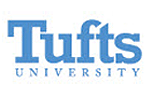Lessons learned regarding managing groundwater and other outcomes from the process
About this Article
Contributed by: Aaron T. Wolf, Joshua T. Newton, Matthew Pritchard
Article Type(s): Analysis
Contributor Perspective(s): Academic
Article last edited 12 Feb 2013 by Amanda
Article originally added by Mpritchard
What is an ASI Article? Individuals may add their own Analysis, Synthesis, and Insight (ASI) to a case by linking a case to an ASI article. These ASI articles are protected, so that each person who creates a section retains control of their own content. Please use the discussion page for commenting on this article. Learn More
This article is linked to Preserving and Monitoring the Guarani Aquifer for Current and Future Use
The points below are summarized or excerpted from the Oregon State University Transboundary Freshwater Dispute Database (TFDD). Matthew Pritchard provided this and other summarized analysis or insights from the TFFD on behalf and with permission of the original authors. Available on-line at: http://www.transboundarywaters.orst.edu/
Lessons Learned
- Groundwater management needs to be integrated into regional water management strategies and programs.
- Most of the Integrated Water Resource Management (IWRM) program in the region had been devoted to surface waters, largely ignoring one of the largest underground freshwater resources in the world.
- In order to manage a transboundary aquifer effectively, it requires coordinated collaboration, cooperation and communication between national and sub-national governments, as well as the private sector, international organizations and local civil society.
- With an integrated management strategy that affects international politics, economics, the environment and social well-being, it is necessary to include all stakeholders in the process from design to implementation to maintenance, in order for the program to be effective and sustainable. There needs to be a broad understanding of a common goal and a clear strategy and methodology to achieve that goal.
Creative Outcomes Resulting from Resolution Process
The foresight with which the four basin states are using to plan the use of the Guarani Aquifer System has lead to holistic, sustainable management plans that include public participation and education and are based on preventative actions.
These contributions were transcribed by Matthew Pritchard on behalf and with the permission of the original authors. Original material: Oregon State University Transboundary Freshwater Dispute Database Available on-line at: http://www.transboundarywaters.orst.edu/
| ASI | ASI:Lessons learned regarding managing groundwater and other outcomes from the process + |
| ASIContributor | Aaron T. Wolf +, Joshua T. Newton + and Matthew Pritchard + |
| Article Creator | Mpritchard + |
| Case Study | Preserving and Monitoring the Guarani Aquifer for Current and Future Use + |
| Last Edited | 12 February 2013 + |
| Last Edited User | Amanda + |
| Perspective | Academic + |
| Reflection Type | Analysis + |
 There are no
There are no 


